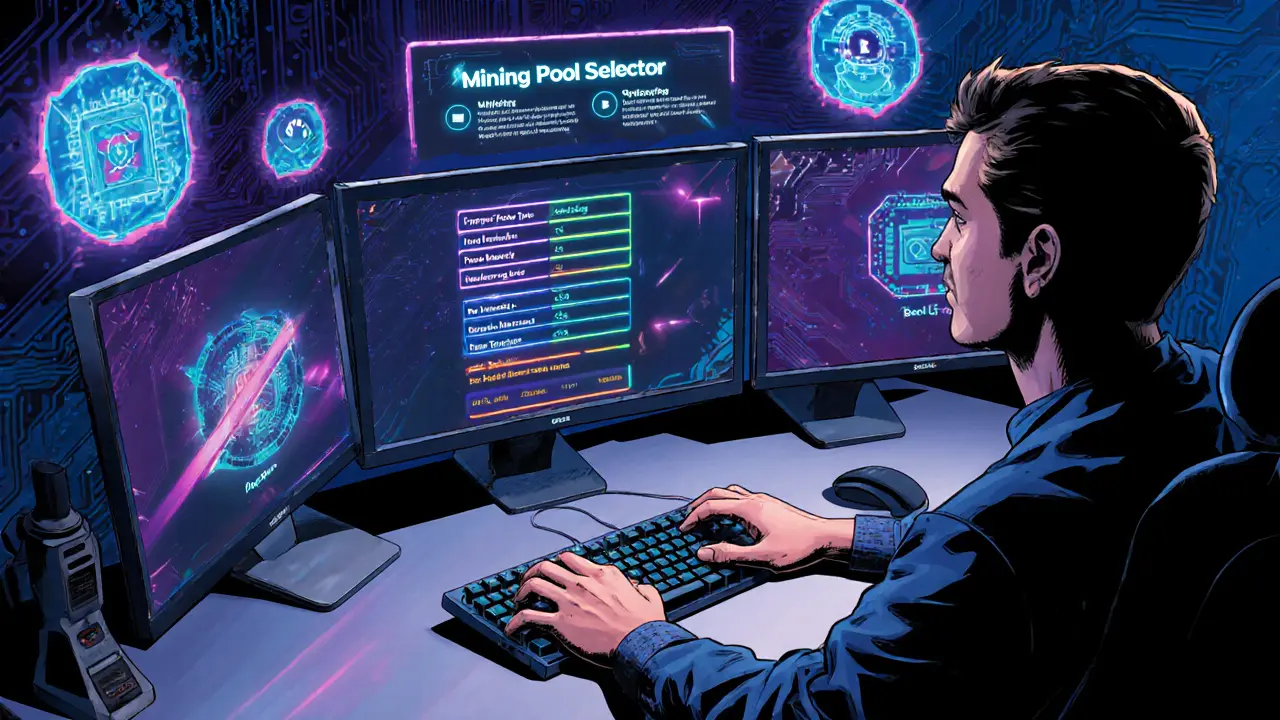Mining Pool Comparison
When you start looking at mining pool comparison, the process of evaluating different mining pools based on fees, payout methods, and network contribution. Also known as pool selection, it helps miners pick the right pool for their hardware and goals. Another key factor is Proof of Work, the consensus mechanism that powers Bitcoin and many other coins, because it directly ties your earnings to the total hashrate, the combined computing power of all miners in a network you join.
Mining pool comparison is essential for anyone who wants to maximize returns while keeping costs low.
Key Factors to Compare
First, look at the fee structure. Pools charge anywhere from 0% to 3% of your reward, and some add extra transaction fees. A low‑fee pool can boost your net profit, but don’t ignore stability; a cheap pool that drops blocks frequently hurts you more than a slightly pricier, reliable one. Next, check the payout scheme—PPS (Pay‑Per‑Share), PPLNS (Pay‑Per‑Last‑N‑Shares), or solo. PPS gives instant, predictable payouts, while PPLNS rewards you based on the pool’s recent luck, which can be bigger but less certain.
The size of the pool matters, too. Large pools like AntPool or F2Pool provide steady block finds because they contribute a big slice of the network’s hashrate, which smooths variance. Smaller pools let you earn a larger share of each block, but the hit‑or‑miss nature can lead to long dry spells. Your own mining hardware, the ASICs or GPUs you use to solve PoW puzzles also dictates the best pool size: high‑hashrate rigs thrive in big pools, while modest setups may find more consistent rewards in mid‑size or niche pools.
Security and transparency are often overlooked. A reputable pool should publish real‑time statistics, show the full block history, and offer two‑factor authentication for user accounts. Some pools run their own nodes, which reduces the risk of being fed false data—a common attack vector in less trusted pools. Also, check whether the pool supports the cryptocurrency you mine; many pools specialize in Bitcoin, while others focus on ETH, Litecoin, or newer PoW coins.
Geographic location can affect latency. Mining rigs connect to the pool’s server; the closer the server, the lower the latency, which can improve your share of the work contributed. If you’re based in Europe, a pool with European servers might give you a subtle edge over a pool that’s primarily North‑American. This is why many miners run ping tests or use latency‑monitoring tools before committing.
Finally, community and support are worth a look. Active forums, Discord channels, or Telegram groups give you quick answers when you hit a snag with payouts or hardware compatibility. Pools that keep users informed about upcoming software upgrades or network changes make the overall experience smoother, especially when hard forks or protocol updates occur.
Below you’ll find a curated list of articles that dive deeper into specific pools, fee breakdowns, and real‑world case studies. Whether you’re a seasoned miner hunting for a marginal edge or a newcomer trying to avoid common pitfalls, the resources here will help you make an informed decision and get the most out of your mining operation.




